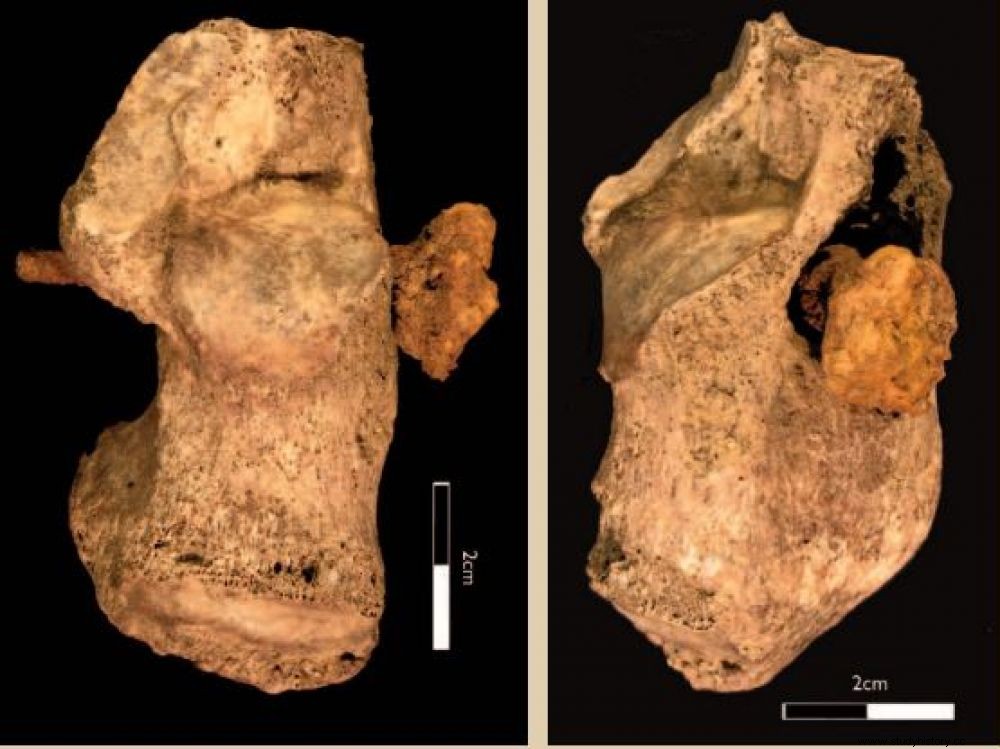A late 2nd-century skeleton has been discovered with a nail driven through the heel bone at the archaeological site of Fenstaton in the county of Cambridge in eastern England. The first case of crucifixion described in Northern Europe.

Talon of the Crucified of Fenstanton
Extremely rare! A nearly 1,900-year-old skeleton, featuring a nail in the heel bone, has been unearthed in one of five Roman settlement cemeteries being excavated at the site of Fenstaton, England. Aged between 25 and 35 at the time of death, the individual could be a victim of capital punishment by crucifixion as applied in the Roman Empire.
A nail that hadn't been noticed
The skeleton was discovered in 2017, but the presence of the nail was not noticed then, because it protruded very little on either side of the mud-covered heel. It was not until analyzes of the skeleton conducted off-site by archaeologist Corinne Duhig, of the University of Cambridge, that this foreign body was spotted. "The one we call 'the man of Fenstaton' had this iron nail in his right heel bone, the calcaneum “, explained the authors of the discovery in an article published in the magazine British Archeology. The authors recall that this is the only known example of crucifixion in northern Europe. were notably in Italy and Israel, as explained by Sciences et Avenir in 2018.

Aerial view of the archaeological site of Fenstaton, in the county of Cambridge, England. Credits:British Archeology Magazine
Signs of lower extremity infections and inflammation
Radiocarbon dates have fixed between 130 and 360 AD. J.C the age of the bones of the man of Fenstaton. His remains also showed signs of ante mortem trauma. , in particular signs of infections and inflammations of the lower limbs, indicating that the victim must have had his limbs bound by bonds or chains. "This evidence suggests that it may have been a slave, or a prisoner “, according to a press release. Although crucifixion was common in the Roman world, osteological traces of this practice are extremely rare.
A real torture
In this very painful and slow execution, nails were driven into the condemned man's wrists or forearms to attach them to the crossbar of a wooden cross (patibulum ), as well as in the feet, together or separately. The spikes were planted either in the heel bones (at the level of the calcaneus) or through the metatarsals, in the middle of the foot. The cross was then erected on the side of a road or an elevation, in full view of all, and the crucified would die from exhaustion and in excruciating pain, at the end of a progressive asphyxiation linked to his position.
This infamous capital punishment was frequently applied in Roman antiquity from the 3
th
century BCE to 337 CE, until Emperor Constantine 1
st
(272-337) prohibits the practice of this summum supplicium .
